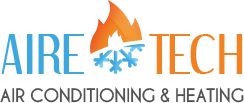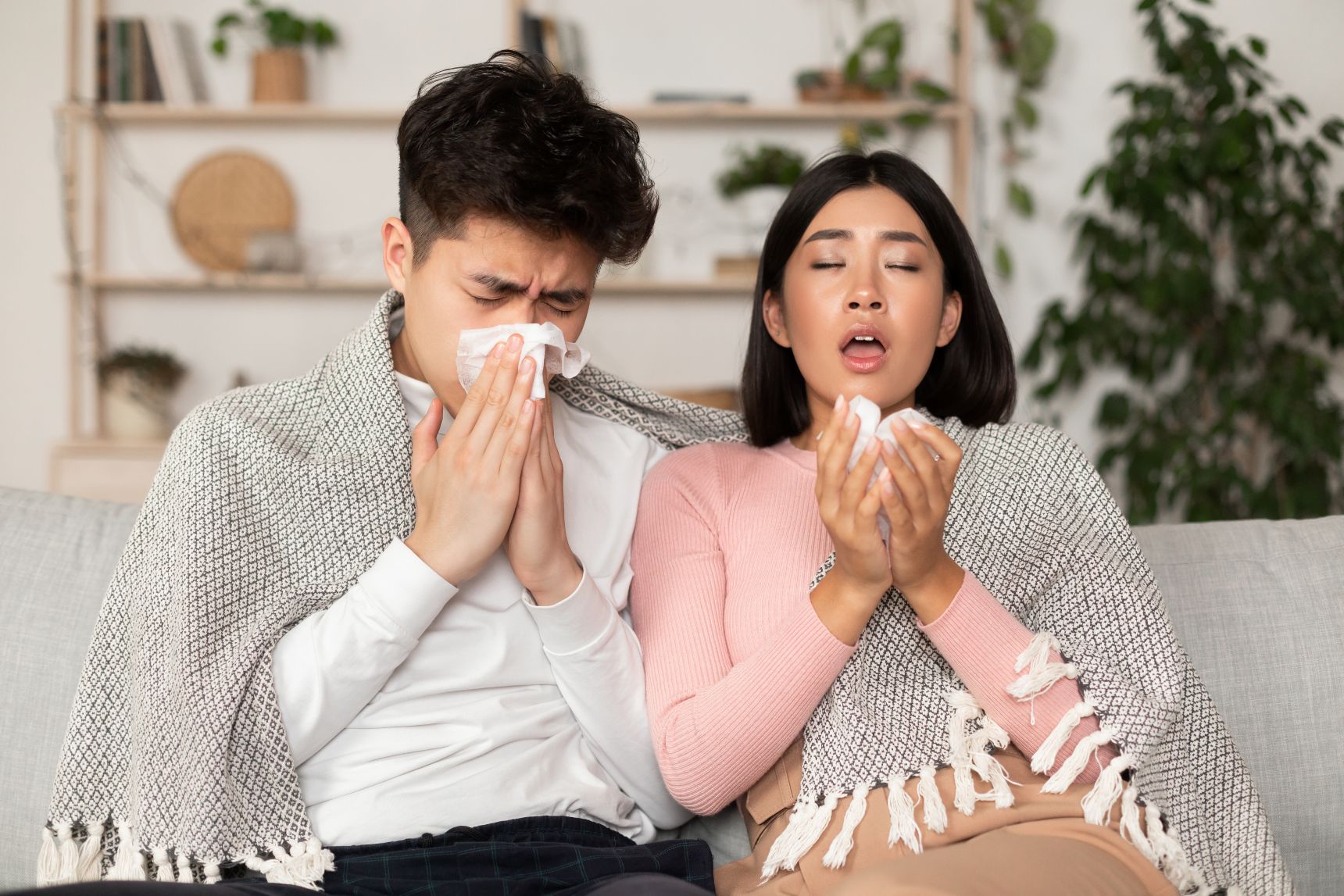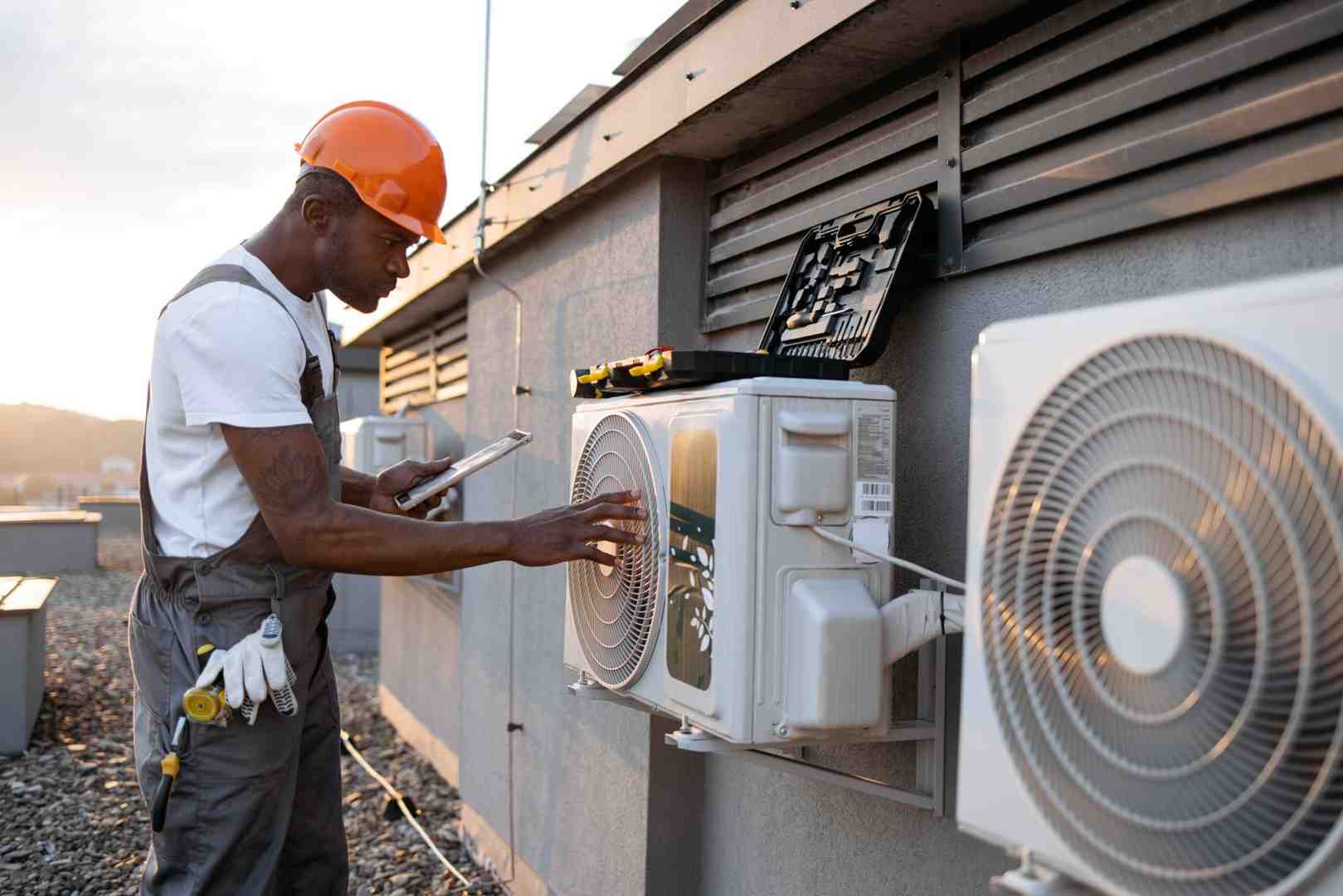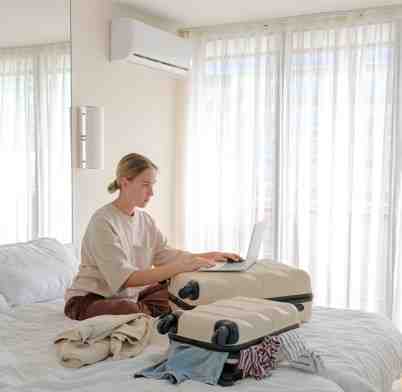When it comes to managing allergies and respiratory issues, creating a clean and healthy indoor environment is essential. The best HVAC solutions focus on allergy-proofing your living space, improving indoor air quality, and maintaining your system regularly to ensure peak performance. From high-efficiency air filters and whole-home air purifiers to humidity control and proper ventilation, the right HVAC setup can significantly reduce airborne allergens and irritants. For individuals dealing with asthma, seasonal allergies, or other respiratory sensitivities, investing in a well-maintained, allergy-friendly HVAC system can make a world of difference in comfort and overall well-being.
Living in a hot climate, like Southern California, makes reliable air conditioning essential, but it can also bring challenges like frequent breakdowns or high energy bills. However, with some focused HVAC solutions aimed at reducing allergens, you can achieve clearer air and greater comfort.
An effective approach involves incorporating high-efficiency air filters and whole-house air purifiers to tackle invisible allergens. Regular maintenance, like changing filters and sealing ducts, keeps your system running smoothly to ensure optimal air quality in your home. By understanding and implementing these strategies, homeowners can not only improve their indoor air quality but also alleviate allergy symptoms.
The Best HVAC Solutions for Homes with Allergies and Respiratory Concerns
For allergy sufferers, choosing the right HVAC solutions is key to maintaining a comfortable and healthy home. Let’s explore some of the most effective options available today.
HEPA Filters
HEPA filters are a top choice for those with allergies. These filters capture 99.97% of particles as small as 0.3 microns, which includes most common allergens like dust, pollen, and pet dander. Using HEPA filters in your HVAC system can significantly reduce airborne allergens, making the air in your home cleaner and safer to breathe.
- Why Choose HEPA? They are highly efficient and can be integrated into existing HVAC systems with ease.
Air Purifiers
Air purifiers work in tandem with your HVAC system to remove additional pollutants from the air. They are particularly beneficial in homes with pets or in urban areas with high pollution levels. Installing a whole-house air purifier ensures that the air in every room is clean and fresh.
- Benefits of Air Purifiers: They help reduce odors, VOCs, and other contaminants, enhancing overall air quality.
UV Germicidal Lights
Another advanced solution is UV germicidal lights. These lights are installed inside the HVAC system and use ultraviolet light to kill bacteria, viruses, and mold spores. This helps prevent the spread of germs and keeps your home environment healthier.
- How They Work: UV lights sanitize the air as it circulates through the system, reducing the risk of respiratory infections.
By incorporating these best HVAC solutions for homes with allergies and respiratory concerns, you can create a sanctuary free from the irritants that trigger allergy symptoms. Whether it’s through the use of HEPA filters, air purifiers, or UV germicidal lights, these technologies collectively work to improve indoor air quality, making your home a more comfortable place to live.
Efficient Air Filtration Systems
When it comes to creating an allergen-free home, efficient air filtration systems are essential. The right filters can make a huge difference in the air quality of your home, especially for those with allergies or respiratory concerns.
MERV Filters
MERV filters are a popular choice for improving indoor air quality. The MERV (Minimum Efficiency Reporting Value) rating measures a filter’s ability to capture particles. Higher MERV ratings mean better filtration.
- MERV 9-12: These mid-range filters capture small particles like pollen and dust mites, making them suitable for most homes.
- MERV 13-16: For those with severe allergies, these high-efficiency filters capture even smaller particles, including bacteria and smoke.
High-Efficiency Filters
High-efficiency filters, like HEPA filters, are the gold standard for allergy sufferers. They trap 99.97% of particles as small as 0.3 microns, including allergens like pollen, pet dander, and dust.
- Why Use High-Efficiency Filters? They provide the highest level of air purification, making your home a safer place for those with respiratory issues.
Filter Replacement
Regular filter replacement is crucial for maintaining an efficient filtration system. Dirty filters not only reduce air quality but also strain your HVAC system, leading to higher energy bills and potential repairs.
- Replacement Tips:
- Check Filters Monthly: Especially in homes with pets or during high pollen seasons.
- Replace Every 1-3 Months: Depending on the filter type and environmental factors.
- Signs You Need a New Filter: Increased dust, allergy symptoms, or higher utility bills.
By choosing the right filters and maintaining them properly, you can significantly improve the air quality in your home. This is a vital step in implementing solutions for those with allergies and respiratory concerns.
Advanced Air Purification Technologies
As concerns about indoor air quality continue to grow, advanced air purification technologies have become essential for creating healthier home environments—especially for those with allergies, asthma, or other respiratory conditions. These cutting-edge solutions go beyond standard HVAC filtration, targeting microscopic pollutants like bacteria, viruses, mold spores, and volatile organic compounds (VOCs). From UV-C light systems and photocatalytic oxidation to HEPA filtration and ionization, today’s air purifiers are smarter, more effective, and seamlessly integrated into modern HVAC systems. Embracing these innovations can dramatically improve the air you breathe and contribute to long-term health and comfort.
Whole-House Air Purifiers
Whole-house air purifiers integrate with your HVAC system to provide comprehensive air cleaning throughout your home. Unlike portable units, these purifiers ensure clean air in every room, reducing allergens like dust, pollen, and pet dander.
- Benefits:
- Consistent Air Quality: Ensures the same level of air purity across all rooms.
- Convenience: No need to move portable units from room to room.
- Low Maintenance: Typically requires less frequent filter changes compared to smaller units.
Ionizing Purifiers
Ionizing purifiers work by releasing charged ions into the air, which attach to airborne particles. These particles then clump together and fall out of the air, making them easier to capture with filters.
-
Pros:
- Effective on Small Particles: Can remove particles that are too small for standard filters.
- Quiet Operation: Often quieter than other types of air purifiers.
-
Cons:
- Ozone Production: Some ionizing purifiers produce small amounts of ozone, a lung irritant. It’s important to choose models that minimize ozone emissions or consider alternate technologies if ozone sensitivity is a concern.
Ozone Considerations
Ozone is a reactive gas that can be harmful when inhaled. While some air purifiers use ozone to neutralize odors and pollutants, it’s crucial to weigh the benefits against potential health risks.
-
Health Impacts:
- Respiratory Irritation: Can cause coughing, throat irritation, and worsen asthma symptoms.
- Indoor Air Quality: High levels of ozone can react with other indoor pollutants, potentially creating harmful byproducts.
-
Recommendations:
- Use with Caution: If using an ozone-generating purifier, ensure it’s in a well-ventilated area and follow manufacturer guidelines.
- Consider Alternatives: Opt for non-ozone producing purifiers, like HEPA-based systems, especially if household members have respiratory issues.
Incorporating these advanced air purification technologies can significantly improve the air quality in your home, providing a healthier environment for those with allergies and respiratory concerns. Next, we’ll dig into humidity control solutions to further optimize your indoor air quality.
Humidity Control Solutions
Maintaining the right humidity levels is essential for a healthy home, especially if you or your family members have allergies or respiratory concerns. Too much humidity can lead to mold growth and dust mites, while too little can cause dry skin and irritated sinuses. Let’s look at some solutions for achieving balanced humidity in your home.
Whole-House Humidifiers
Whole-house humidifiers are integrated into your HVAC system to add moisture to the air, especially during the colder months when heating can dry it out.
- Benefits:
- Consistent Humidity: Keeps humidity levels stable throughout your home.
- Healthier Air: Prevents dry skin, nosebleeds, and respiratory discomfort.
- Low Maintenance: Requires minimal upkeep once installed.
Dehumidifiers
In contrast, dehumidifiers remove excess moisture from the air, which is crucial during humid summer months.
- Advantages:
- Mold Prevention: Reduces the risk of mold and mildew growth.
- Comfort: Makes your home feel cooler and more comfortable.
- Allergy Relief: Helps to decrease dust mites and other allergens.
Ideal Humidity Levels
The ideal indoor humidity level is between 30% and 50%. This range helps prevent both mold growth and overly dry air, providing a comfortable and healthy environment.
- Tips for Monitoring:
- Use a Hygrometer: This handy device measures the humidity level in your home.
- Adjust Settings: Depending on the season, you may need to adjust your humidifier or dehumidifier settings to maintain optimal humidity levels.
By incorporating these humidity control solutions into your home, you can create a more comfortable and healthier living space. This is especially important for those with allergies and respiratory issues, as balanced humidity levels can significantly reduce symptoms. Next, we’ll explore ventilation and air exchange systems to further improve your indoor air quality.
Ventilation and Air Exchange Systems
Proper ventilation is essential for maintaining fresh air circulation in your home, especially if you or your family members suffer from allergies or respiratory concerns. Let’s explore some effective solutions.
Energy Recovery Ventilators (ERVs)
Energy Recovery Ventilators are a smart choice for improving indoor air quality without sacrificing energy efficiency. These systems exchange stale indoor air with fresh outdoor air while transferring heat and moisture between the two air streams.
- Benefits:
- Energy Efficiency: Reduces heating and cooling costs by using the energy from outgoing air to condition incoming air.
- Improved Air Quality: Continuously refreshes indoor air, reducing allergens and pollutants.
- Comfort: Balances humidity levels, making your home more comfortable.
Fresh Air Circulation
Ensuring a steady flow of fresh air is crucial for reducing indoor pollutants and allergens.
- Simple Tips:
- Open Windows: When weather permits, open windows to let fresh air in and stale air out.
- Use Exhaust Fans: In areas like kitchens and bathrooms, exhaust fans can help remove moisture and odors quickly.
- Schedule Ventilation: Set up a routine to regularly ventilate your home, especially during activities that produce moisture or odors.
Duct Sealing
Leaky ducts can compromise your HVAC system’s efficiency and allow dust, allergens, and pollutants to enter your home. Proper duct sealing ensures that your system works efficiently and that all the air you pay to heat or cool actually reaches its intended destination.
- Advantages of Duct Sealing:
- Improved Efficiency: Prevents energy loss, saving on utility bills.
- Improved Air Quality: Keeps out dust and allergens that can infiltrate through leaks.
- Consistent Comfort: Ensures even temperature distribution throughout your home.
By integrating these ventilation and air exchange systems into your home, you can significantly improve indoor air quality and create a healthier environment for everyone, especially those with allergies and respiratory concerns. Next, we’ll address some frequently asked questions about HVAC and allergies to further guide your journey to better air quality.
Frequently Asked Questions about HVAC and Allergies
What is the best HVAC filter for allergies?
The best HVAC filters for allergies are HEPA filters and those with high MERV ratings.
- HEPA Filters: These are designed to capture 99.97% of particles as small as 0.3 microns, including dust, pollen, and pet dander. They’re ideal for allergy sufferers.
- MERV Ratings: Filters with a MERV rating of 11 or higher are effective at trapping smaller particles. They can significantly reduce the presence of allergens in your home.
How can HVAC systems improve indoor air quality?
HVAC systems improve indoor air quality through air filtration and purification technologies.
- Air Filtration: High-efficiency filters in your HVAC system trap dust, pollen, and other allergens, preventing them from circulating in your home.
- Purification Technologies: Some systems include UV germicidal lights or activated carbon filters to kill bacteria and remove VOCs (volatile organic compounds), reducing irritants that can worsen respiratory issues.
What maintenance is required for allergy-friendly HVAC systems?
Regular maintenance is crucial for keeping your HVAC system effective at reducing allergens.
- Regular Inspections: Schedule annual inspections to ensure your system is running smoothly and efficiently.
- Filter Changes: Replace filters every one to three months, depending on your home’s allergen levels and the type of filter. Homes with pets or in high-pollen areas may need more frequent changes.
By choosing the right filters and keeping your HVAC system well-maintained, you can significantly improve the air quality in your home, providing relief for those with allergies and respiratory concerns.
Call Aire Tech Today!
At Aire Tech AC, we understand how important it is to breathe clean air, especially for those with allergies and respiratory concerns. Our commitment to enhancing indoor air quality through HVAC upgrades ensures that your home remains a safe haven from allergens.
By integrating advanced solutions like HEPA filters, UV germicidal lights, and efficient air purifiers, we help create an environment where you can breathe easier. These technologies are designed to capture and eliminate a wide range of airborne particles, providing significant allergy relief.
Our team is dedicated to offering top-notch service and expertise, guiding you through selecting the right upgrades for your home. We believe that maintaining a healthy indoor atmosphere is not just about comfort—it’s about enhancing your quality of life.
For more information on improving your home’s air quality, visit our Indoor Air Quality page. Let Aire Tech AC be your partner in achieving a healthier, more comfortable living space.

